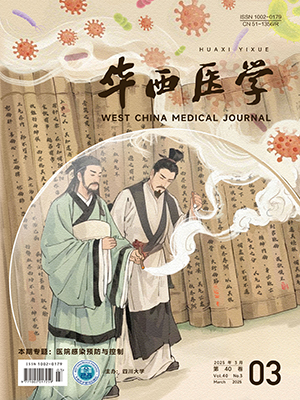Objective To analyze the characteristics of patients transferred by ambulances to emergency department before and after coronavirus disease 2019 epidemic, in order to improve the efficiency of emergency triage, optimize the utilization of emergency resources, and provide a reference for standardized tiered medical services in different situation. Methods The patients’ information collected through Wenjuanxing questionnaire was extracted, who were transferred by ambulances to the Emergency Department of West China Hospital of Sichuan University between December 27th, 2018 and April 28th, 2019 (before epidemic), or between December 27th, 2019 and April 28th, 2020 (during epidemic), or between December 27th, 2020 and April 28th, 2021 [in regular epidemic prevention and control period (REPCP)]. The general information, sources, reasons for referral, disease spectrum and triage levels of patients in the three periods were compared. Results There were 3993, 2252 and 1851 cases before epidemic, during epidemic, and in REPCP, respectively. The differences in gender and age among the three periods were not statistically significant (P>0.05). The percentage of referrals from tertiary hospitals in each period was 74.00%, 72.65%, and 76.12%, respectively, which was higher in REPCP than that during epidemic (P<0.05). The percentage of direct referrals from emergency department in each period was 41.00%, 42.14%, and 44.46%, respectively, which was higher in REPCP than that before epidemic (P<0.05). The percentage of two-way referrals in each period was 37.79%, 36.63%, and 34.36%, respectively, which was lower in REPCP than that before epidemic (P<0.05). During epidemic and in REPCP, the proportions of referrals due to “need for surgery” (24.72%, 27.84%, and 28.74%, respectively) and “request by family members” (49.64%, 53.33%, and 56.24%, respectively) increased compared with those before epidemic (P<0.05), while the proportion of referrals due to “critical illness” decreased compared with that before epidemic (40.20%, 35.21%, and 33.17%, respectively; P<0.05); the proportion of referrals due to “diagnosis unknown” decreased in REPCP compared with that before epidemic (15.50%, 13.90%, and 11.89%, respectively; P<0.05). The proportion of acute aortic syndromes in REPCP increased compared with that during epidemic (3.46%, 2.98%, and 4.65%, respectively; P<0.05), the proportion of trauma in REPCP increased compared with that before epidemic (13.72%, 15.76%, and 17.77%, respectively; P<0.05), and the proportion of pneumonia/acute exacerbation of chronic obstructive pulmonary disease during epidemic and in REPCP decreased compared with that before epidemic (8.44%, 3.73%, and 3.84%, respectively; P<0.05). The proportion of critically ill patients referred in each period was 72.88%, 75.58%, and 79.15%, respectively, which was the highest in REPCP (P<0.05). Conclusions The epidemic has a significant impact on emergency ambulance referrals, and emergency triage needs to be continuously optimised and improved in staff, facilities, processes and management. It is necessary to further improve the implementation of hierarchical diagnosis and treatment, strengthen information communication between referral and emergency departments of receiving hospitals, and improve referral efficiency.
Citation:
DAI Yi, JIANG Zhen, YAO Rong, ZHANG Shu, CHEN Yao, XIE Wenyi, ZOU Liqun. Impact of coronavirus disease 2019 epidemic on emergency ambulance referrals. West China Medical Journal, 2021, 36(11): 1497-1501. doi: 10.7507/1002-0179.202109176
Copy
Copyright © the editorial department of West China Medical Journal of West China Medical Publisher. All rights reserved




